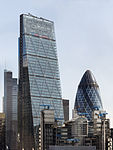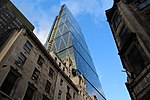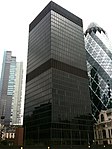East India House
1648 establishments in EnglandCorporate headquartersDemolished buildings and structures in LondonFormer buildings and structures in the City of LondonHeadquarters in the United Kingdom ... and 3 more
Office buildings in LondonProperties of the East India CompanyUse British English from August 2015

East India House was the London headquarters of the East India Company, from which much of British India was governed until the British government took control of the Company's possessions in India in 1858. It was located in Leadenhall Street in the City of London. The first East India House on the site was an Elizabethan mansion, previously known as Craven House, which the Company first occupied in 1648. This was completely rebuilt in 1726–29; and further remodelled and extended in 1796–1800. It was demolished in 1861. The Lloyd's building, headquarters for Lloyd's of London, was built on the site of the former East India House.
Excerpt from the Wikipedia article East India House (License: CC BY-SA 3.0, Authors, Images).East India House
Lime Street, City of London
Geographical coordinates (GPS) Address Nearby Places Show on map
Geographical coordinates (GPS)
| Latitude | Longitude |
|---|---|
| N 51.513 ° | E -0.082 ° |
Address
Lloyd's of London
Lime Street 1
EC3M 7HA City of London
England, United Kingdom
Open on Google Maps










